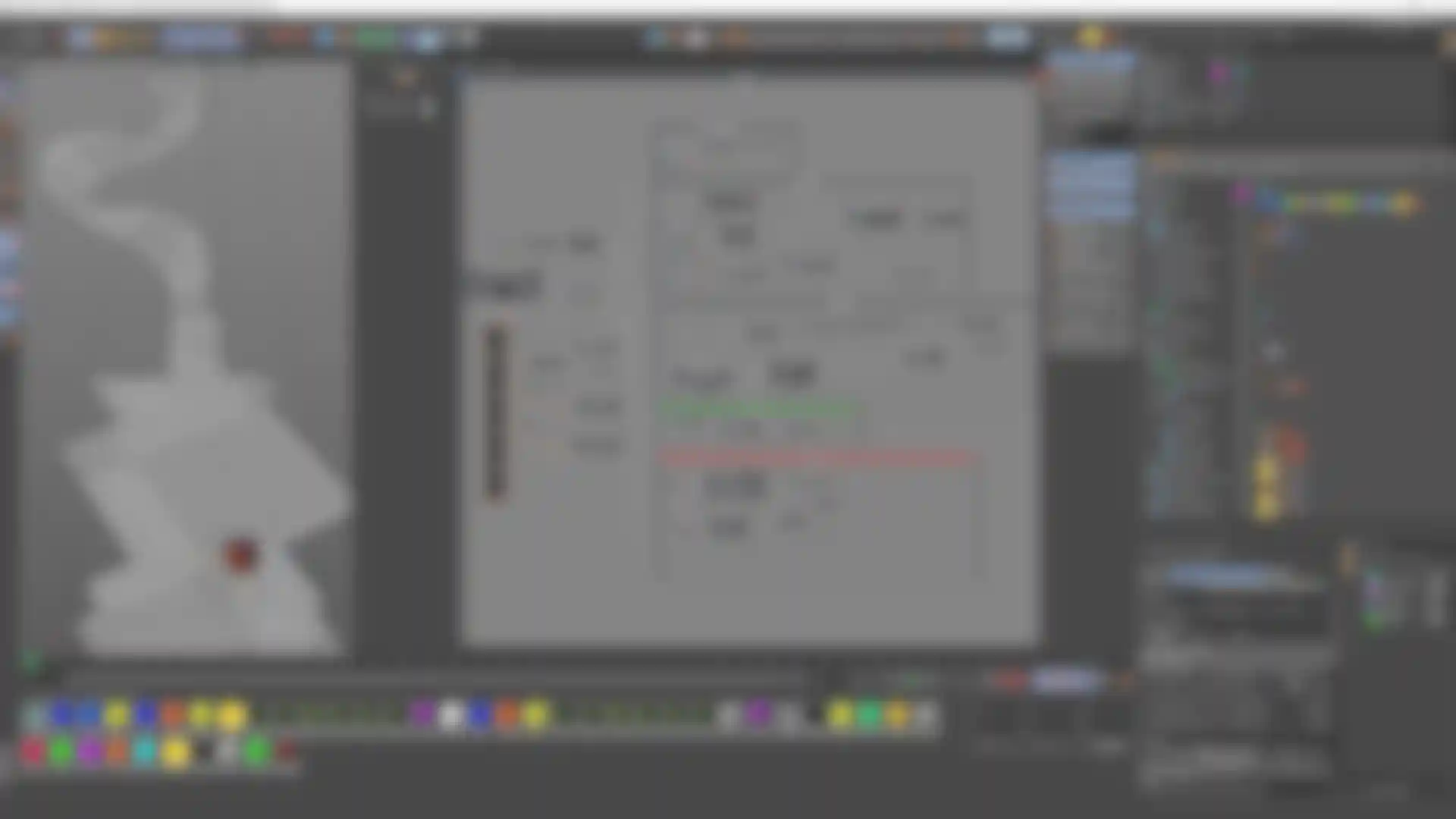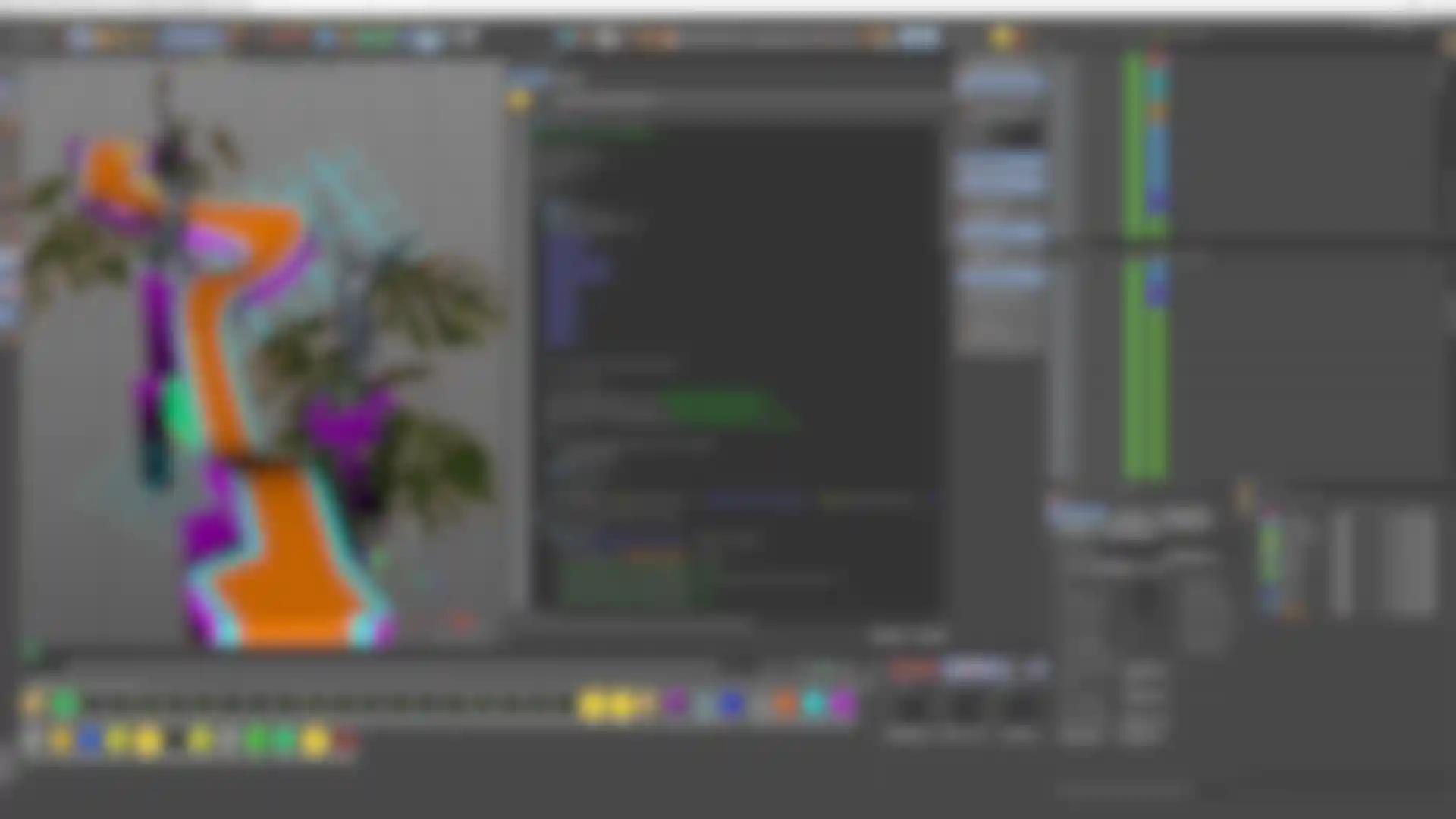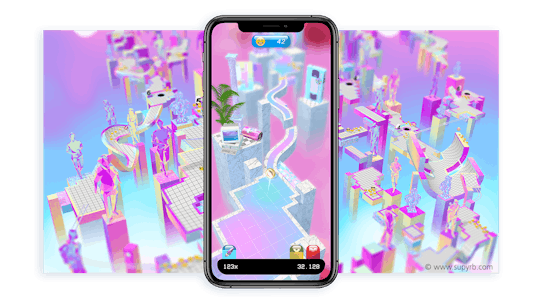
Marbloid - Losing Your Marbles with Cinema 4D Marbloid is an addicting and challenging 3D marble adventure for iPhone and iPad, with an easy gameplay and one-of-a-kind artistic style.
Marble Madness from 1984 is a classic video game. The aim of the game is to guide a marble through an obstacle course, which is not an easy task when you add the marble's own inertia. A German team of artists and developers who were inspired by the original game created their very own innovative marble labyrinth and endless runner mix and coined it Marbloid.
For the obstacle course, the game selects from a pool of individual level elements to create an exciting live course with curves, jumps, portals and speed pads. The intuitive modeling tools in Cinema 4D were the primary tools used by the development team when designing the course. For example, the Subdivision Surfaces object was used intensively for the construction of the winding curves, and the Spline tools and the new Knife tool introduced in Cinema 4D R18 were used to precisely increase the resolution of the level geometry.
To keep the iteration cycle as short as possible for level design the team decided to take a new path to avoid constant exporting to the Unity3D game engine: "We used the Bullet Physics Engine in Cinema 4D and a plug-in that reads game controller input to control our sphere directly in Cinema 4D. This made it possible for us to quickly design and test new level elements," explains Andreas Gaschka. "We used XPresso expressions and a bit of Python to reflect the input design of the Unity project. We were even able to implement complex game elements such as our speed pads in Cinema 4D and test our level design live!" "Cinema 4D uses Bullet Physics while Unity uses NVIDIA PhysX. Each offers a slightly different physical result. With some fine-tuning of the various parameters we were able to adapt the Cinema 4D simulation to give Marbloid the same feel as the original game," adds Johannes Deml.


"As an MSA customer we have access to the Cineversity Smart Export Plugin, which adds helpful functions to the already seamless export from Cinema 4D to Unity. Thanks to the excellent Python integration in Cinema 4D we've also developed several scripts with which we were able to prepare the level segments for the exchange," remembers Andreas Gaschka. "The scripts converted game elements such as spawners, power ups, emojis and decorative objects to Null objects. The naming conventions and an import script in Unity were used to replace the Null objects in Unity by the respective element and during the time allotted."
For the game's design, the team was inspired by Supyrb from Vaporwave: Marbloid created a collage of marble, cherry blossoms and 90s technology to create a fresh and colorful game world.
"Cinema 4D's professional tools and its flexibility made it a core element in our development pipeline. Cinema 4D is perfect for quickly finding the right solution and it also offers the flexibility to find solutions to complex problems. Thanks to Cinema 4D we were able to concentrate on the spirit of the game instead of haggling with technology."

Marbloid is now available at Apple's App Store and an Android version is planned for spring 2019. The Control4D plug-in, which was used by the team at Supyrb to control the sphere in Cinema 4D, is now available for free at the developer's website!
Marbloid website: marbloid.com



